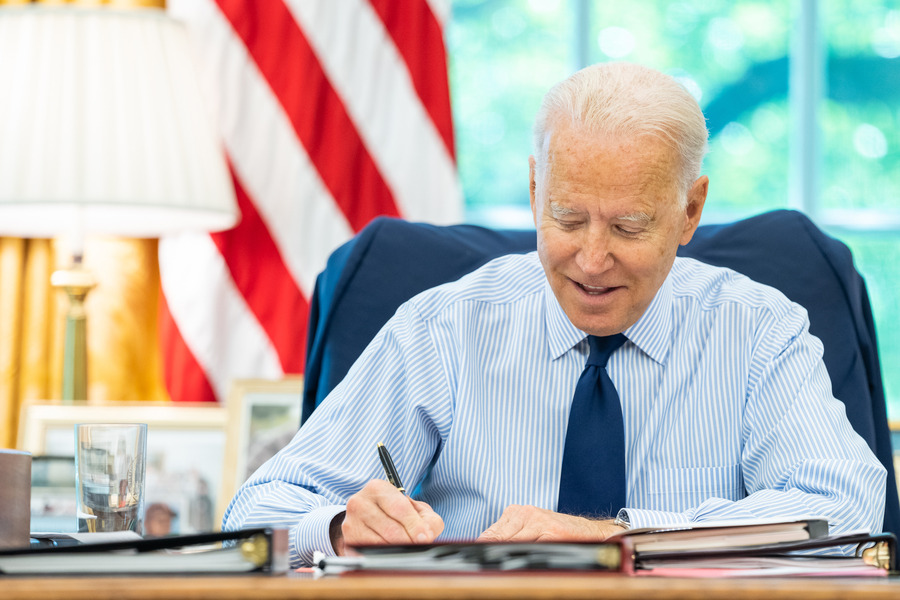The CMCR Decision in Al-Bahlul: Peter Margulies Examines the Relevance of the Nuremberg Membership Prosecutions
Peter Margulies (Roger Williams) takes up one of the central issues addressed in the CMCR's decision last Friday in al-Bahlul:
Material support charges in military commissions illustrate the perils of painting with a broad brush. In United States v.
Published by The Lawfare Institute
in Cooperation With

Peter Margulies (Roger Williams) takes up one of the central issues addressed in the CMCR's decision last Friday in al-Bahlul:
Material support charges in military commissions illustrate the perils of painting with a broad brush. In United States v. al-Bahlul, the Court of Military Commission Review (CMCR) continues the dangerous flirtation with the Nuremberg membership cases that it began with its Hamdan decision in June. As it happens, al-Bahlul’s facts support the material charges far better than the facts in Hamdan. However, the tribunal fails to recognize the difference, compounding the confusion about its vital work. Ironically, critics of the commissions, such as Kevin Jon Heller, also ignore those differences, limiting the utility of their critique. Heller is right that the Nuremberg membership cases are a thin reed, indeed. As I’ve explained in a recent paper, The Fog of War Reform: Change and Structure in the Law of Armed Conflict After September 11, the Nuremberg prosecutors soon became anxious that membership was an unduly amorphous basis for guilt, at least for those who provided generic service to organizations. Virtually all of those convicted of membership offenses were principals, not foot soldiers like bin Laden’s driver, Hamdan. Moreover, the CMCR’s discussion of the Nuremberg cases is incomplete. For example, the CMCR cited the convictions of defendants Flick and Steinbrinck, charter members of the quaint group, “Friends of Himmler.” The court failed to mention that the defendants were not merely friends of the psychopathic SS head, but actually bankrolled his infamously lethal organization, giving him what the Nuremberg tribunal called a “blank check.” See 6 Trials of War Criminals Before the Nuernberg Military Tribunals Under Control Council Law No. 10, at 1221 (War Crimes Trials). Striving to find a Nuremberg analog to Hamdan’s foot soldier status, the CMCR cited the example of noncommissioned officer Mathias Graf. Graf, however, served in a German unit that was directly responsible for the murder of scores of civilians. That unit, in turn, was part of the notorious einsatzgruppen, which killed hundreds of thousands of noncombatants. See 4 War Crimes Trials 586. Even so, the tribunal sentenced Graf to time served – a result that seemed more like a face-saving device for the prosecution than an affirmation of Graf’s guilt. In sum, Heller is correct in arguing that the Nuremberg tribunals provide virtually no support for making a bit-player’s service a war crime. Indeed, treating material support at Hamdan’s level as a war crime erodes the legitimacy of the legal system, signaling that war crimes prosecutions are merely a form of victor’s justice. However, al-Bahlul’s case presents a more favorable set of facts for the CMCR’s approach. Al-Bahlul, as a trusted propagandist, was no mere foot soldier. Like the wealthy German industrialists who bankrolled the SS and were appropriately convicted of membership offenses, he was an indispensable participant in a murderous organization. As such, he fits snugly into the ICTY’s first Joint Criminal Enterprise prong in Prosecutor v. Tadic, which has gained widest approval among scholars: one who intentionally provides “material assistance” to those engaged in unlawful killing. See Tadic, P196. Consider that Al-Bahlul was intimately involved in the propaganda strategy that led to the 9/11 attacks. For example, he designed the “Martyr Wills” left by two of the attackers, al-Bahlul, slip op. at 70, and authored the recruiting video, “The Destruction of the American Destroyer U.S.S. Cole” (id. at 78). Since terrorists commit violence in large part to reap propaganda benefits and seek a stylized salvation, al-Bahlul’s work was closely linked to the attacks. Al-Bahlul’s distinctive role undercuts Heller’s reliance on the Statute of Rome in his critique. The Rome Statute, at Art. 25(3)(d), prohibits intentional acts that in “any… way” contribute to the willful killing of civilians. Al-Bahlul’s design of the September 11 attackers’ Martyr Wills contributed in exactly the ex ante fashion contemplated by this provision. Uncoupling al-Bahlul’s and Hamdan’s cases is the best way to establish accountability for Al Qaeda without undermining the rule of law. Sadly, the merits of the cases have been swamped by their status as a Rorschach test for champions and foes of military commissions. Uncoupling the cases may diffuse the rhetoric and pave the way for a more nuanced understanding of law and policy.
Robert (Bobby) Chesney is the Dean of the University of Texas School of Law, where he also holds the James A. Baker III Chair in the Rule of Law and World Affairs at UT. He is known internationally for his scholarship relating both to cybersecurity and national security. He is a co-founder of Lawfare, the nation’s leading online source for analysis of national security legal issues, and he co-hosts the popular show The National Security Law Podcast.





